Excerpts from Jim Conrad's
Naturalist Newsletter
from the December 21, 2014 Newsletter issued from Río Lagartos, on the Yucatan Peninsula's northern coast (~N21.60°, ~W88.16°), Yucatán state, MÉXICO
BURHEAD
Last week we looked at a local aquatic plant called Burhead. It was Echinodorus subalatas, and you can see its leaves looking like those of North America's lawn weed known as the Narrow-leafed Plantain, at www.backyardnature.net/yucatan/burhead.htm.
This week in a shallow pond along the road through the marsh between Río Lagartos and San Felipe another aquatic plant turned up with white-petaled blossoms very similar to last week's Burhead, but this one's leaves were much broader and had rounded lower lobes, as shown below:
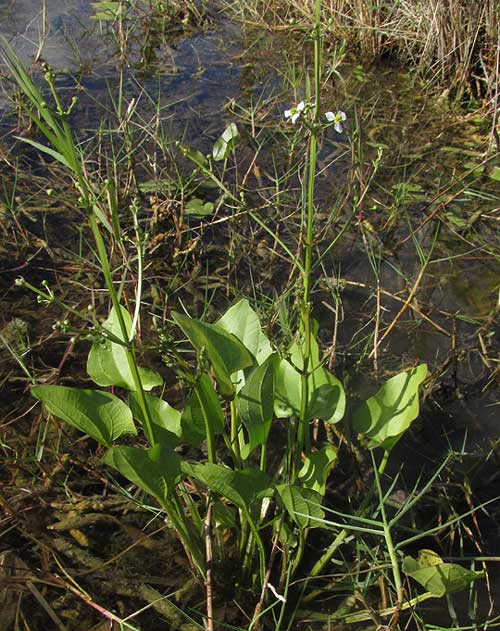
A single leaf better showing its lower lobes appears below:
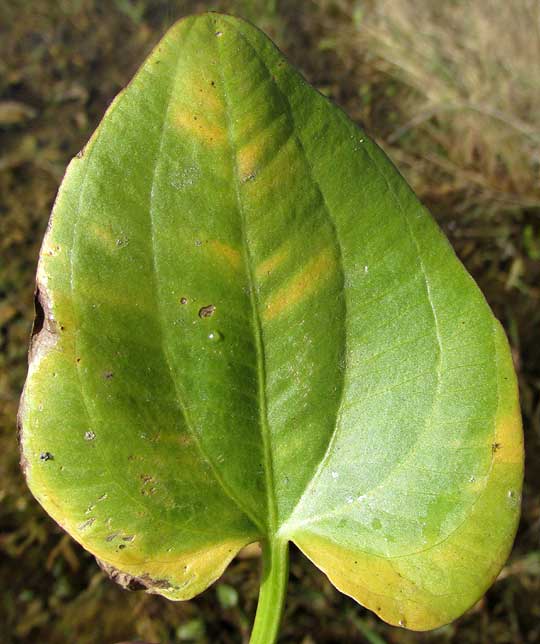
On the page showing last week's Burhead, a picture shows a leaf's unusual and pretty venation. This week's plant leaves display similar venation, but it's not as ordered and elegant as last week's. You can see veins of this week's plant below:
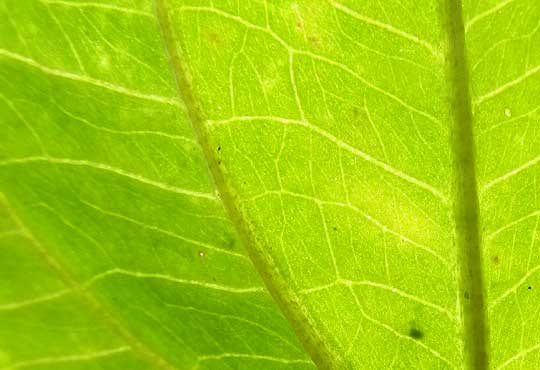
The flowers, however, look quite similar -- though their petals are more narrowed at their bases into short "claws"-- as you can see below:
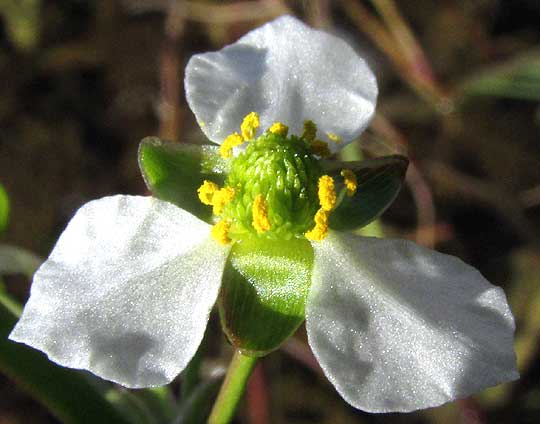
Below the flowers, the three green sepals are curiously ribbed, as seen below:
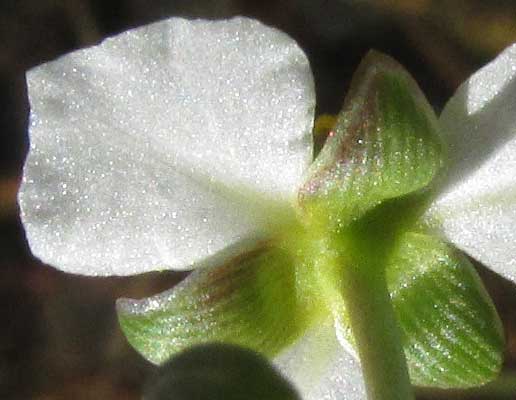
This week's white-flowered aquatic has reason to share many features with last week's Burweed because it belongs to the same genus, Echinodorus. Last week we had Echinodorus subalatas; this week we have ECHINODORUS BERTEROI, also known as Burhead, since normally the name givers don't look at such details as we do.
This week's Echinodorus berteroi is found in clay soils of wet ditches, streams and shallow ponds from Wisconsin and South Dakota south through the central US, plus here and there elsewhere in the US, especially California, and south through Mexico and the Caribbean area, and then also in South America. It's a strange distribution and one wonders what history fragmented its range so, and places it so solidly in the south-central US, but absent or present only in spots elsewhere.
Last week's Burhead mostly bore fruits, and the few flowers seemed to represent more of an afterthought than a genuine flowering season. This week's Burhead species is just beginning to flower, its inflorescences mostly occupied with unopened flower buds, and there wasn't a fruiting head to be seen.
In some parts of its distribution, decoctions, or "teas," brewed from our Echinodorus berteroi have been used traditionally to treat epilepsy. A 2006 paper by Buznego & Pérez-Saad in the journal Epilepsy Behavior found that the decoctions significantly controlled aspects of induced epileptic episodes in rats.